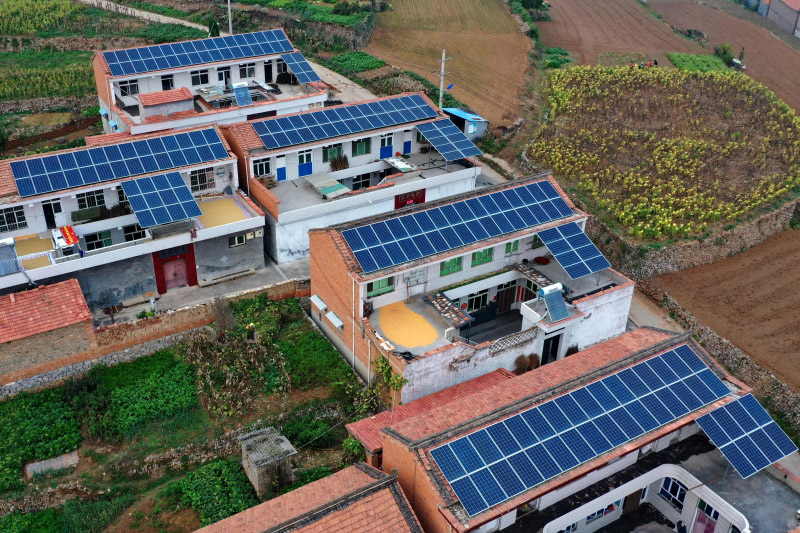Rooftop PV: Solving the worries of renewable energy space and acceptance
For China to achieve clean and low-carbon development, it is fundamental to change the energy structure, from fossil energy-based to renewable energy-based. In recent years, China’s equipment costs for renewable energy power generation including wind and solar power have dropped significantly. For example, the cost of photovoltaic modules has dropped from 50 yuan/watt in 2000 to about 2 yuan/watt now. Although the annual power generation hours of solar and wind power are only about 1/3 and 1/2 of the annual utilization hours of coal-fired power generation, the cost of power generation is close to coal-fired power generation and far lower than gas-fired power generation. At the same time, when considering the cost of renewable energy power generation, we must also consider installation space costs, access costs, and consumption costs. At present, the bottleneck in the development of renewable energy is installation space and receiving capacity.
The first is the issue of installation space. Photovoltaic and wind power are not stored in underground deposits like oil, natural gas, and coal. They are all low-density energy sources and require sufficient installation space. Where can I find suitable installation space? The roof of a building can become an important place for carrying photovoltaic resources. At present, the roofs and vertical surfaces of my country's urban and rural buildings that can receive sufficient sunlight exceed 10 billion square meters. If all of these building surfaces are developed and utilized, 2 trillion kilowatt-hours of electricity can be generated annually, which is about 28% of my country's current annual total power generation.
The second is the issue of acceptance. At present, for the grid, the lack of sufficient flexible power is the main reason why it is difficult to accept more renewable energy power. Faced with the characteristics of power systems that require instantaneous balance, the development of flexible power sources (power sources that can adjust their own output according to the requirements of the demand side) and turning rigid loads of electrical energy into flexible loads are the key to solving this bottleneck.
On the one hand, smart charging piles for new energy vehicles can be combined with urban buildings and used as flexible loads to receive external renewable energy power; on the other hand, urban buildings can also be used as flexible electricity through virtual power plant technology. The load can even play a role as a flexible power supply. For example, turning the power distribution system of urban buildings into a DC storage and intelligent charging and discharging system of DC plus photovoltaic cells, and the storage and release of electric energy through flexible DC transmission technology, can effectively cope with the peak-to-valley difference caused by irregular power consumption. It can increase the power grid's ability to accept wind power and photovoltaics.
For rural areas, the construction of rooftop photovoltaic systems can not only solve the problem of electricity consumption for farmers' production and life, but also transmit the remaining electricity to the grid, which will become an important way for farmers to increase their income. At the same time, to realize the rural energy revolution, we must comprehensively consider and integrate the layout. In addition to clean heating, we must also develop the electrification of agricultural vehicles and agricultural machinery to improve the level of rural electrification and the ability to absorb clean and renewable energy. Only in this way can the energy revolution in rural areas be completely realized.

In the post-epidemic era, rooftop photovoltaic systems can be used as part of the "new infrastructure" strategy. Unified planning, construction, and transformation of the "photovoltaic + DC + smart charging pile" integrated building power supply and distribution system will not only reduce the cost of electricity, but also provide clean energy for the development of high-end manufacturing in the "15th Five-Year Plan" and "16th Five-Year Plan" .Clean energy can also drive a number of emerging industries, such as photovoltaic cells, wind power generation equipment, new batteries, electric vehicles, charging piles, DC power supply and distribution, electrified agricultural machinery and other sunrise industries, making it a leader.


View More(Total0)Comment Lists